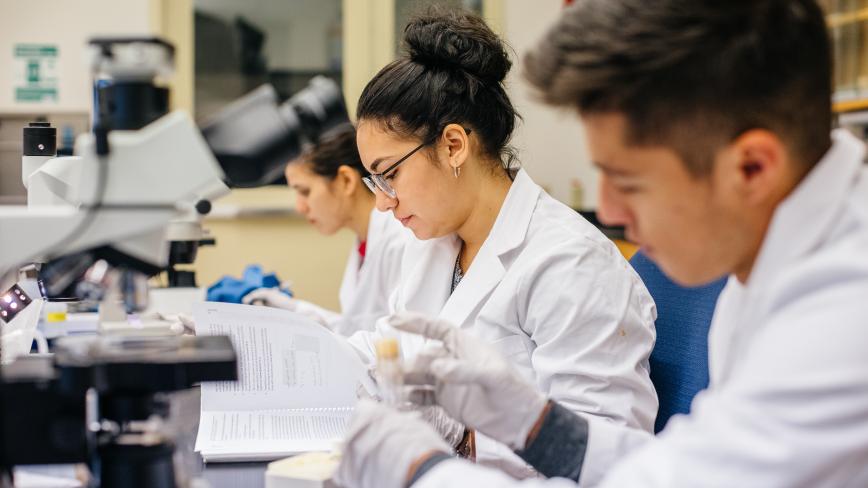There’s no question that 2023 was the “Year of Ozempic.” The new drug, along with others in the class of glucagon-like peptide-1 receptor (GLP-1) agonists, had a meteoric rise last year, matching the cultural pervasiveness of Taylor Swift and artificial intelligence.
From the promise of the new drugs to potentially treat conditions beyond obesity and diabetes, to the forecasted impacts on other industries – their efficacy, cost and coverage were seemingly everywhere.
As the new year unfolds, the health care community, including providers and insurers, is closely monitoring the performance of novel diabetes and obesity treatments. These medications are being scrutinized for effectiveness and safety, especially compared to their more affordable, traditional counterparts.
The University of California Health's Center for Data-driven Insights and Innovation (CDI2) has developed an innovative research framework that holds the potential for accelerating vital discoveries in the medical field.
By using actual clinical data, this approach promises to significantly reduce research costs and save valuable time for physicians, allowing them to identify the most effective medications in a particular condition, saving time and costs associated with trying various treatments.
New UC research shows potential for medication combinations
A recent study featured in the Journal of the American Medical Association (JAMA) Network by Rohit Vashisht, Ph.D., Clinical Data Scientist at the University of California, San Francisco Bakar Computational Health Sciences Institute, highlighted the use of real-world clinical data across UC’s five academic health centers. Vashisht, alongside colleagues from UCSF Pediatrics, the Division of Endocrinology and Metabolism, and researchers from UC San Diego and UC Davis, delved into the clinical data of 31,852 patients with type 2 diabetes. These patients were treated with conventional medications such as metformin to determine the efficacy and safety of adding GLP-1 and other second-line medications to treatment.
Metformin, long established as the benchmark for diabetes treatment and blood sugar regulation, typically serves as a prerequisite therapy before newer drugs are authorized. Yet, studies on metformin and other traditional diabetes medications are frequently conducted in controlled settings, comparing their effectiveness against a placebo, often diverging from real-world scenarios. Vashisht and his team sought to leverage the comprehensive CDI2 database, encompassing data from over 9 million patients, to uncover insights into the benefits of combining newer medications with metformin in diabetes treatment.
“We wanted to know, what if we could utilize real-world clinical data – which is collected during routine clinical care – to assess the comparative effectiveness and safety of multiple treatment options in type 2 diabetes management?” Vashisht said. “Which treatment combination when added to metformin would be both effective as well as safe?”
Vashisht and his colleagues found that the newer medications were associated with fewer diabetes-related cardiovascular and renal complications as well as maintaining glycemic controls. The data analysis found that GLP-1 medications, such as Ozempic, Trulicity and others, were more effective than dipeptidyl peptidase-4 (DPP-4) inhibitors when added to metformin.
CDI2 data framework speeds research
But the true transformative aspect of this research lies in its unprecedented speed. By harnessing the power of integrated data and advanced analytics with methods from causal inference, machine learning and in-depth sensitivity analysis, the CDI2 team's approach can yield crucial insights in days or months, a stark contrast to the decades traditionally required for such breakthroughs in medical research.
“Our entire analysis essentially summarized a decade of clinical data in about one hour,” Vashisht said.
“What we realized far beyond the diabetes drug efficacy was that you could use this real-world data to generate this evidence rapidly and at scale. We could reproduce the results of randomized control trials and show the validity of our methodology,” he said.
The framework allows clinicians to conduct the study repeatedly, each time incorporating the latest real-time clinical data and yielding new and updated findings. “The research framework has enormous implications for how medicine is practiced and how physicians can ensure they have the latest real-world evidence to guide patient treatment,” Vashisht added.
“Now that the framework has been created, UC doctors can essentially re-run the analysis as it is, or with respect to other outcomes of their interest, to calculate all these numbers – reviewing millions of clinical data points and providing the latest evidence out there,” Vashisht said. “From there, they can use that to determine a patient’s best course of treatment, with insights such as patient characteristics, safety and effectiveness of newer drugs to inform their decisions.”
The implemented framework also has the potential to impact health care policy, Vashisht said, particularly considering the cost of new prescription drugs, as the data gives new insights into efficacy, prescription rate and patient use.
Vashisht’s next study focuses on the impact of these new drugs on cardiovascular events in patients with diabetes. Given the prevalence of both diabetes and cardiovascular diseases and the emergence of new drugs in recent years, he is confident that real-world data and analytics will be critical as physicians and patients seek new treatments that are safe and effective.
“This research approach truly shows the power of data science to drive breakthroughs that immediately benefit patients. With the latest research evidence at their fingertips, individual physicians have a clearer understanding of which treatments work best for specific patients,” said study co-author Atul Butte, M.D., Ph.D., the chief data scientist for UC Health. “For diabetes patients, the findings in this research are a game changer.”
About University of California Health
University of California Health comprises six academic health centers, 20 health professional schools, a Global Health Institute and systemwide services that improve the health of patients and the University’s students, faculty and employees. All of UC’s hospitals are ranked among the best in California and its medical schools and health professional schools are nationally ranked in their respective areas.

